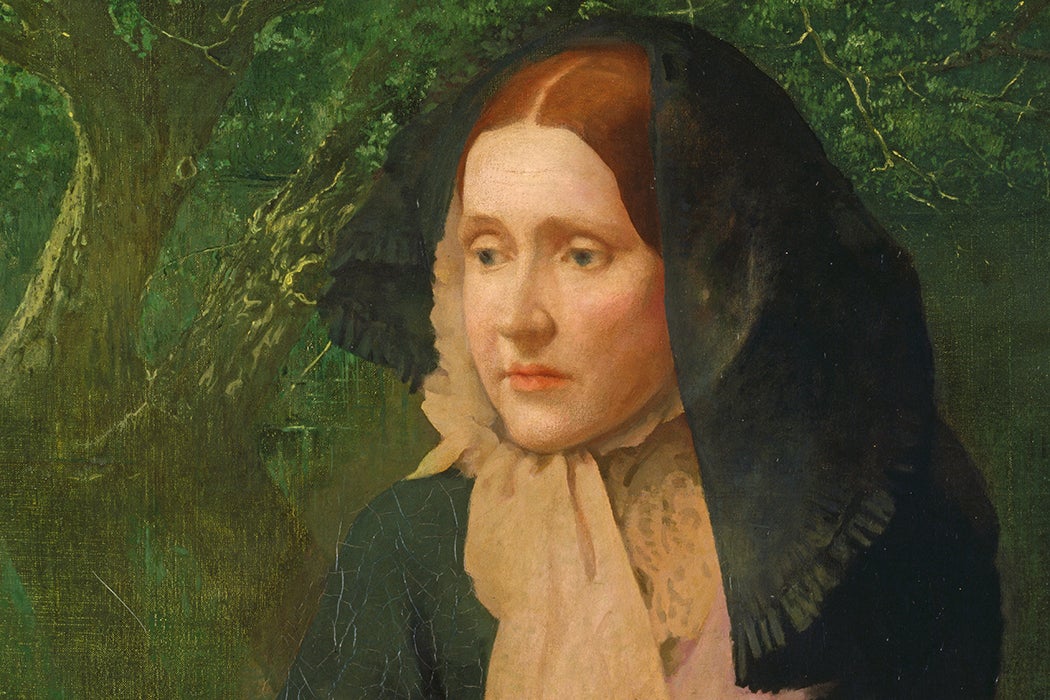This past July, the Atlantic Monthly commissioned New Orleans musician and Late Show with Stephen Colbert bandleader Jon Batiste to record a new version of Julia Ward Howe’s legendary Civil War song, “Battle Hymn of the Republic.” Using only a piano and what he had in his pockets (which included a worn paperback of Oscar Wilde’s The Importance of Being Earnest and a tuning fork) Batiste’s record radically reimagines the hymn for 2017. For those only familiar with the Mormon Tabernacle Choir’s triumphant rendition of it, Batiste’s interpretation is jarring. It brims with the soaring sounds of African American spirituals and gospel, the rhythms of bamboula drums, the staccato snares of a military march, and beneath it all, the hymn’s somber melodic line. But Batiste’s remix of our unofficial national anthem is less an update of the hymn than it is a musical recollection of the complex transatlantic history that made the song possible in the first place.
Julia Ward Howe wrote her most famous poem in a single burst of inspiration 156 years ago this November. At the time, the 42-year-old mother of six was visiting Union camps and hospitals with her husband as part of his work for the Sanitary Commission. On her way home, she and some companions began singing some of the soldiers’ songs, including the ubiquitous (and slightly gruesome) “John Brown’s Body.” When the Unitarian minister James Freeman Clarke suggested to Howe that she write new lyrics to its stirring melody, she at first demurred. Early the next morning, however, she awoke to discover that “the long lines of the desired poem began to twine themselves in my mind.” Beginning with the line, “Mine eyes have the seen the glory of the coming of the Lord,” the poem’s five stanzas poured from her pen.
Edward D. Snyder posits that what “expedited the composition” of the poem was Howe’s intimate familiarity with scripture. Indeed, biblical language suffuses the “Battle Hymn,” lending an apocalyptic tone. By imagining God’s wrath on the side of the North, Howe frames the Civil War in the most righteous terms possible. Between God’s “trampling out the vintage where the grapes of wrath are stored” and Christ’s distant birth “in the beauty of the lilies,” the poem casts America’s most bloody war as a vital piece of sacred (and world) history.
The Bible may be the fount from which the hymn’s lyrics sprung, but there are more subterranean currents of influence, too. Decades before Northerners grafted John Brown’s martyrdom onto it, the hymn’s melody had been a staple of Methodist camp meetings. It was originally associated with the hymn “Say, Brothers, Will You Meet Us,” whose chorus will look very familiar to anyone who has heard the “Battle Hymn of the Republic”:
Glory, Glory, Hallelujah
Glory, Glory, Hallelujah,
His truth is marching on.
What made this song such a hit at open-air religious gatherings was its call-and-response structure, a form that owes much to African singing traditions. Although there is still some debate over whether the verse-chorus structure originated in Europe or Africa, African American participation in camp meetings undoubtedly propelled these songs into the canon of American hymnody and ensured their survival. As John F. Garst notes, black Methodists “brought their African heritage to bear” on the evolution of camp-meeting hymns. Thus, as the hymn’s melody and chorus traveled from wilderness camp meetings to city streets to the campfires of Union soldiers to Julia Ward Howe’s attentive ears, it bore the marks of a global array of cultural influences.
Weekly Newsletter
The hymn’s vision of the righteous cause of the Union has made it a contentious contribution to our national culture. This may explain why its apocalyptic words are not often inscribed on our nation’s monuments. Yet, given the song’s transatlantic scope, it is fitting that the most famous monument to bear lines from the “Battle Hymn” is not in America at all, but France.
At the Normandy American Cemetery and Memorial in Coleville-sur-Mer stands the statue of a sinuous, muscular young man arising out of the water with his head tilted towards the sky and his arms outspread. Created by the American-born sculptor Donald Harcourt De Lue after World War II and titled “The Spirit of American Youth Rising from the Waves,” the statue’s base is inscribed with the first line of Howe’s poem. De Lue’s use of the poem’s line transforms into a testament to the promises of internationalism after World War II. In the aftermath of Charlottesville and the ensuing conflicts over the meaning of monuments, the strange history of the “Battle Hymn of the Republic” reminds us that no meaning can be fixed for long.







